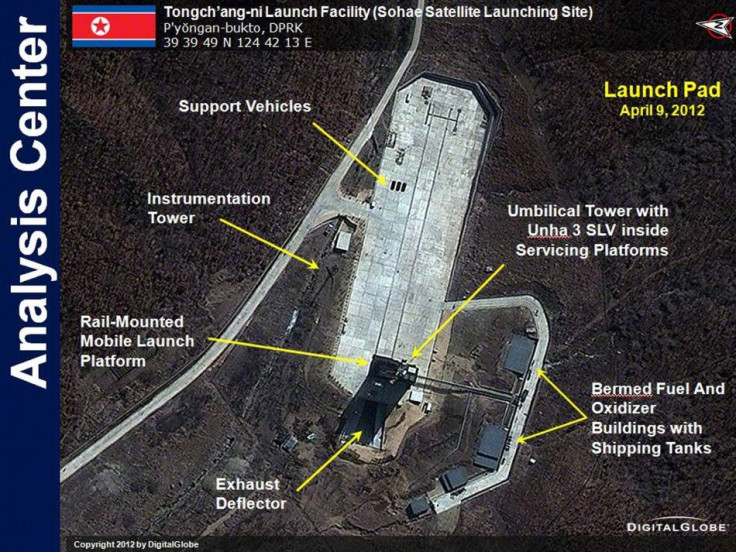Iranians Attended North Korean Rocket Launch: Report

About a dozen Iranian government officials observed North Korea’s failed rocket launch, according to South Korea’s Yonhap news agency, citing diplomatic sources.
The Iranians who visited North Korea were linked to Teheran’s ballistic missile program.
Twelve Iranians of the Shahid Hemmat Industrial Group [a group affiliated with Iran’s Revolutionary Guard, which is the target of U.S. and United Nations sanctions] arrived in North Korea. The Iranians undoubtedly were there to observe the missile launch and receive test data from North Korea, the source told Yonhap.
Government officials in Seoul neither denied nor confirmed the sighting of Iranians, citing security and intelligence concerns.
The launch of the three-stage Unha-3 rocket, which had earlier prompted security fears across East Asia, particularly in Japan, Philippines and South Korea, ended in failure when it fell into the Yellow Sea on Friday just minutes after send-off.
Pyongyang reportedly planned the launch to coincide with the 100th anniversary of the country’s founder, Kim Il-Sung.
North Korean officials claimed that the project was designed to establish a communications satellite in the atmosphere, but the U.S and South Korea, among other foreign states, believe it was meant to tests its military ballistic missile capacity.
Yonhap noted that Iran and North Korea have long been suspected of having exchanged ballistic missile technology.
Britain’s Daily Telegraph newspaper reported that the Shahab-3 ballistic missile developed by Iran is believed to be a replica of North Korea's mid-range Nodong missile.
The Telegraph also said that according to The Choson Sinbo, a Japanese-based newspaper that is generally pro-Pyongyang, North Korea is embarking on a five-year space rocket program designed to boost the country's economic development.
© Copyright IBTimes 2024. All rights reserved.





















